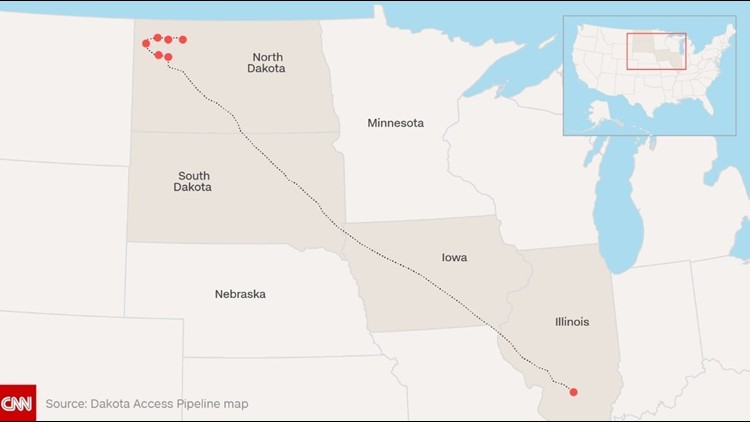(CNN) — A federal judge Friday denied a Native American tribe’s request for a temporary restraining order to halt construction on the Dakota Access Pipeline, potentially igniting an already volatile battle over the controversial project.
In his decision, U.S. District Judge James E. Boasberg wrote that the Standing Rock Sioux Tribe failed to show “it will suffer injury that would be prevented by any injunction the Court could issue.”
The ruling comes one day after North Dakota Gov. Jack Dalrymple activated the state National Guard “in the event they are needed to support law enforcement response efforts,” according to a National Guard spokesman.
In a joint statement, however, the U.S. Justice and Interior departments and the Army acknowledged “important issues raised by the Standing Rock Sioux Tribe and other tribal nations.” They asked the pipeline company to voluntarily halt construction while the Army reconsiders the decision to proceed under the National Environmental Policy Act or other federal laws.
“The Army will move expeditiously to make this determination, as everyone involved — including the pipeline company and its workers — deserves a clear and timely resolution,” the statement said.
“In the interim, we request that the pipeline company voluntarily pause all construction activity within 20 miles east or west of Lake Oahe.”
The tribe filed an emergency motion Sunday asking the court “to prevent further destruction of the tribe’s sacred sites by Dakota Access Pipeline.
Boasberg wrote that the court “does not lightly countenance any depredation of lands that hold significance to the Standing Rock Sioux” and that it “scrutinizes the permitting process here with particular care.”
“Having done so, the Court must nonetheless conclude that the Tribe has not demonstrated that an injunction is warranted here,” the decision said.
The $3.7 billion project, which would span four states, has led to heated, sometimes violent protests.
Proponents say the project could be an economic boon for the region and potentially change the landscape of the US crude oil supply.
Those seeking to halt construction warn of an environmental disaster that would destroy sacred Native American sites.
The pipeline’s developer, Energy Transfer Partners, has predicted the project would help the United States become less dependent on importing oil from unstable regions of the world.
The plaintiffs claim the tribe was not properly consulted before the US Army Corps of Engineers approved the pipeline project, which would run from North Dakota to South Dakota, Iowa and Illinois.
The Army Corps of Engineers has declined to comment, citing the pending litigation.
Thousands of people from more than 200 Native American tribes have supported the Standing Rock Sioux’s efforts to protect its lands, waters and sacred sites during construction of the pipeline, according to the tribe.
If completed, the 1,172-mile pipeline would carry 470,000 barrels of crude oil a day from North Dakota to Illinois.
Energy Transfer said the pipeline would bring an estimated $156 million in sales and income taxes to state and local governments. It would also add 8,000 to 12,000 construction jobs, the developer said.
But about 30 environmental groups, including the Sierra Club and Greenpeace, have slammed the pipeline project, calling it “yet another example of an oil pipeline project being permitted without public engagement or sufficient environmental review.”‘
Protesters are also worried that digging the pipeline under the Missouri River could affect the drinking water supply if the pipeline breaks.
Protests turned violent over the weekend, with some demonstrators breaking down a wire fence and trespassing onto a construction area, the Morton County Sheriff’s Department said.
“Protesters physically assaulted private security officers hired by Dakota Access Pipeline. The security officers were hit and jabbed with fence posts and flagpoles,” the sheriff’s department said. “According to several reports from security officers, knives were pulled on them or they witnessed protestors with large knives.”
The sheriff’s department also said two guard dogs were injured.
But protesters disputed that account, CNN affiliate KFYR said. Demonstrators said the guards used pepper spray and tear gas on the activists, and some protesters were injured by the guards’ dogs.



